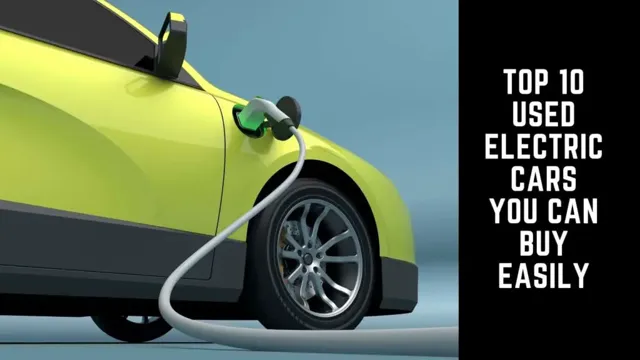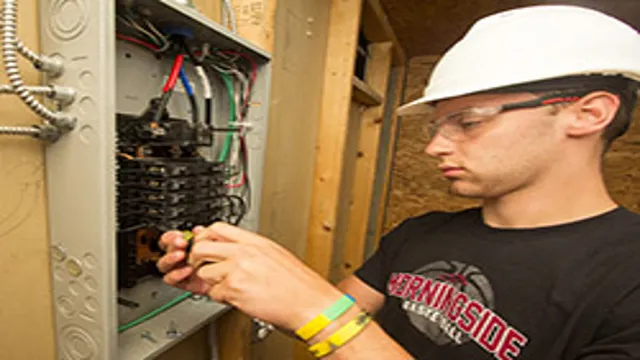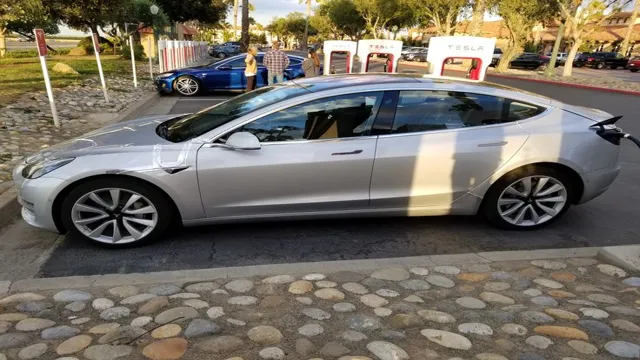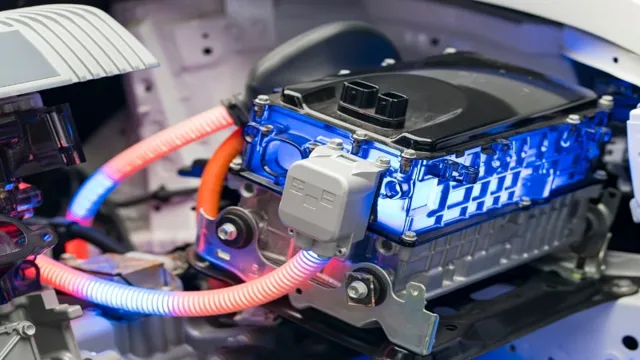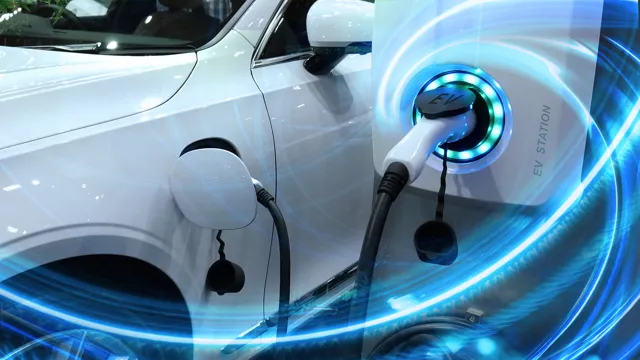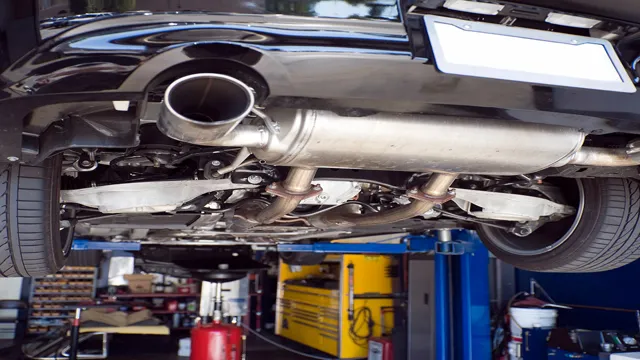Revolutionizing the Road: How Electric Trains are Paving the Way for the Future of Electric Cars
From electric trains to electric cars, technology has revolutionized the transportation industry, giving rise to a new era of sustainable and eco-friendly vehicles. The evolution of electrically powered transportation has been a gradual process, spanning several decades of technological advances. This remarkable feat has changed the way we move around, making travel more convenient, efficient, and environmentally friendly.
The world’s first electric train was invented in the mid-19th century, and since then, the technology has come a long way. In the early 20th century, electric cars were introduced as a cleaner alternative to the gas-guzzling vehicles. However, due to the lack of technological development and infrastructure, they were not as successful as their counterparts.
Fast forward a few decades, and electric cars are now becoming the norm. The advent of electric cars has helped reduce the world’s carbon footprint, which is crucial in combating climate change. With the advancements in technology, electric cars have come a long way in terms of their range, charging time, and affordability.
They have become faster, smarter, and more comfortable, offering a luxurious driving experience without harming the environment. In conclusion, electric trains to electric cars represent a technological evolution that has significantly impacted our lives in a positive way. They have become a symbol of sustainability and innovation, paving the way for a cleaner and greener future.
As technology continues to advance, we can expect to see more innovations in the transportation industry, making travel more efficient, affordable, and eco-friendly.
Introduction
Have you ever thought about the technology used in electric trains and how it can be applied to electric cars? It turns out that these two modes of transportation share more in common than you might think. For example, both rely on electrical power to move forward. One of the technologies that can be employed in electric cars is regenerative braking.
This technology is already utilized in many electric trains and is a way to recover energy that is typically lost when braking. This process involves reversing the current direction of the electric motor, which causes it to act as a generator that converts kinetic energy into electrical energy that can be stored in batteries. By making use of this technology, electric cars can travel longer distances on a single charge and offer greater efficiency.
It is exciting to see how technology innovations in transportation are shared across different types of vehicles to benefit the environment and ultimately improve the driving experience for all.
The Evolution of Electric Trains and Electric Cars
Electric Trains, Electric Cars, Evolution Electric trains and cars have come a long way since their inception. The first electric train was developed over a century ago, and the first electric car was built shortly after. Over the years, both have evolved dramatically in terms of technology and efficiency.
Electric trains have become faster and quieter, and they use less energy than ever before. Electric cars have also come a long way; they can now travel longer distances on a single charge, and they are much more affordable. The evolution of these forms of transportation has been driven by a need for cleaner, more efficient energy sources.
As we continue into the future, it’s likely that electric trains and cars will become even more advanced and become an increasingly important part of our lives.
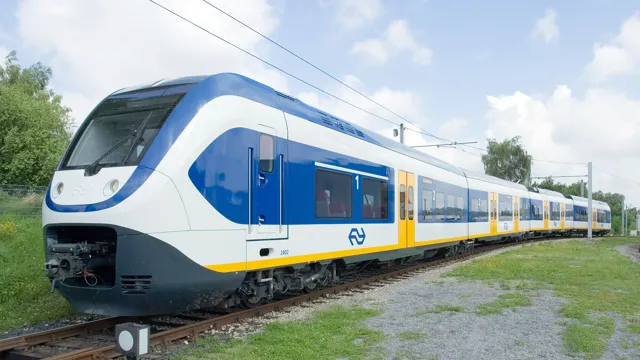
Similarities and Differences between Technologies
When it comes to technology, there is a multitude of different devices and systems available in today’s world. While they may seem vastly different from each other, there are often similarities between them that tie each type of technology together. For example, smartphones and computers may have different functions, but they both involve processing data and communicating through networks.
On the other hand, there are also many differences between technologies, such as the way they are used or the size of their components. It’s important to understand both the similarities and differences when exploring new technologies, as this can help you understand how they work, what they’re capable of, and how they may fit into your life or work. By recognizing these commonalities and distinctions, you can make informed decisions about which technologies are best suited for your needs.
The Technology behind Electric Trains and Electric Cars
Electric vehicles, whether it’s an electric train or an electric car, rely on the same basic technology to function. In fact, many of the advancements in electric cars can be traced back to the technology used in trains. One example is regenerative braking, which is used in trains to capture energy that would otherwise be lost during braking and store it for later use.
This same technology is used in electric cars to improve energy efficiency and reduce dependence on the battery. Another example is the use of high-voltage batteries, which are also used in trains to power the electric motors. Electric cars benefit from the same technology, allowing them to accelerate quickly and travel longer distances without recharging.
Overall, the technology used in electric trains has been adapted and improved to power the next generation of electric cars.
The Use of Induction Motors
Induction Motors Electric trains and electric cars have revolutionized the way we commute and travel. One significant component that has enabled this technology is the induction motor. Induction motors work by creating a rotating magnetic field within the stator, which induces a current in the rotor, causing it to rotate.
The motor’s speed can be controlled by changing the frequency of the alternating current supplied to the stator. This technology can be found in many electric trains and cars, making them the most efficient form of transportation. Induction motors are a type of AC motor that are commonly used in various applications, including electric vehicles.
One of the main benefits of induction motors is their simplicity and reliability. They have no brushes or commutators, which means that they have fewer wearable parts, require less maintenance, and have a longer lifespan. Additionally, they are more energy-efficient than their counterparts, as they can operate near peak efficiency levels over a wide range of speeds.
This feature makes induction motors ideal for electric cars, as they can provide high torque at low speeds, allowing for smooth, quiet acceleration and better overall performance.
In conclusion, the use of induction motors has significantly aided the development of modern electric train and electric car technology. As the world shifts towards renewable energy sources, electric vehicles are rapidly growing in popularity, and induction motors are at the forefront of this revolution.With their simplicity, reliability, and energy efficiency, they are poised to become the prevailing technology in the world of electric transportation.
Regenerative Braking System
Regenerative braking system Electric trains and electric cars rely on regenerative braking systems to reduce energy consumption and increase efficiency. This technology captures the energy that would have been lost during braking and converts it into electricity that can be stored or used to power the vehicle. When the brakes are applied, the system engages a generator that converts the kinetic energy of the vehicle into electrical energy.
This energy is then stored in batteries or fed back into the power grid. The regenerative braking system not only improves fuel efficiency and reduces emissions but also provides a smoother ride since the energy is being reused rather than being dissipated as heat. Additionally, it reduces wear and tear on the brakes, resulting in longer-lasting brake pads and rotors.
Overall, the regenerative braking system is a great example of how innovative technology can help us reduce our carbon footprint and ensure a more sustainable future.
Batteries and Charging System
Electric trains and electric cars are both powered by rechargeable batteries and a charging system that works in a similar way. In both systems, the battery packs are made up of modules that contain lithium-ion cells, which are responsible for storing electrical energy. The charging system relies on external power sources, such as charging stations, to replenish the battery packs when they run low on energy.
With electric trains, the charging system is typically integrated into the rail tracks, while electric cars usually use wall-mounted charging stations or portable chargers. The technology behind electric vehicles has come a long way in recent years, with advancements in battery technology allowing for longer driving ranges and faster charging times. The use of electric vehicles also contributes to a greener environment, as they emit zero tailpipe emissions and use renewable energy sources.
As we continue to research and innovate in this field, we can expect even more efficient and sustainable electric transportation options in the near future.
Implementation and Benefits
The recent advancements in electric trains have opened up exciting opportunities for implementing technology from electric trains into electric cars. Electric trains use regenerative braking that converts the kinetic energy of the train into electrical energy, which can be stored in batteries. This technology could now be used in electric cars, where the energy recovered during braking is used to recharge the battery, extending the range of the vehicle.
This implementation is already being utilized by some electric cars like the Tesla Model S and X. The benefits of this implementation are reduced energy consumption, increased efficiency, and longer driving range. Additionally, regenerative braking reduces wear on the brake pads, ultimately increasing their lifespan.
Through the implementation of electric train technology in electric cars, we can expect longer battery life and better overall performance. By utilizing regenerative braking, electric cars can be operated more sustainably- an important consideration as the world moves towards reducing its carbon footprint.
Examples of Electric Cars using Train Technology
Electric cars using train technology are becoming increasingly popular due to their many benefits. These cars operate using regenerative braking, which converts the kinetic energy produced during braking into electrical energy that can be used to power the car. The principle is similar to that of a train, where the kinetic energy produced during braking is used to power other parts of the train.
This technology not only makes electric cars more efficient but also helps to reduce the amount of energy wasted during braking. Moreover, electric cars using train technology are also more sustainable, as they do not require fossil fuels to operate and produce less harmful emissions compared to traditional cars. Ultimately, the implementation of train technology in electric cars is a great development towards a more sustainable and eco-friendly future.
Environmental and Economic Benefits
One of the most significant benefits of implementing environmental initiatives is the positive impact on both the environment and the economy. By taking steps to reduce waste, conserve energy, and protect natural resources, businesses can reduce their environmental impact while also saving money. For example, implementing recycling programs can significantly reduce waste disposal costs, while using energy-efficient equipment can result in lower utility bills.
Additionally, embracing sustainable practices can also improve a company’s reputation and attract environmentally conscious consumers who are willing to pay more for eco-friendly products and services. Overall, investing in environmental initiatives not only benefits the planet but can also provide economic advantages for businesses.
Conclusion
From the rails to the roads, technology has come a long way. Electric trains paved the way for electric cars, allowing for the development of more sustainable and efficient transportation options. These modes of transportation draw power from the same source, but with modern advancements, electric cars have become more accessible and practical for day-to-day use.
Who knows what other innovations the future will bring, but for now, we can be grateful for the legacy left behind by electric trains in helping shape the future of transportation.”
FAQs
How has technology from electric trains been incorporated into electric cars?
The regenerative braking system in electric cars is a direct result of technology used in electric trains. When the brakes are applied, the energy from the motion of the car is converted into electrical energy and stored in the battery for later use.
What are the benefits of using technology from electric trains in electric cars?
The use of regenerative braking technology in electric cars allows for increased energy efficiency and longer range. Additionally, the technology is more environmentally friendly, reducing the amount of energy wasted during braking.
How does the regenerative braking system work in electric cars?
When the brakes are applied, the electric motor in the car runs in reverse, generating electricity which is then stored in the battery. This process helps to slow down the car and conserve energy.
How has the use of technology from electric trains improved the performance of electric cars?
The regenerative braking system allows electric cars to recover energy that would otherwise be lost during braking. This improves the overall efficiency of the car and extends its range. Additionally, the technology reduces wear and tear on the brakes, leading to lower maintenance costs.

